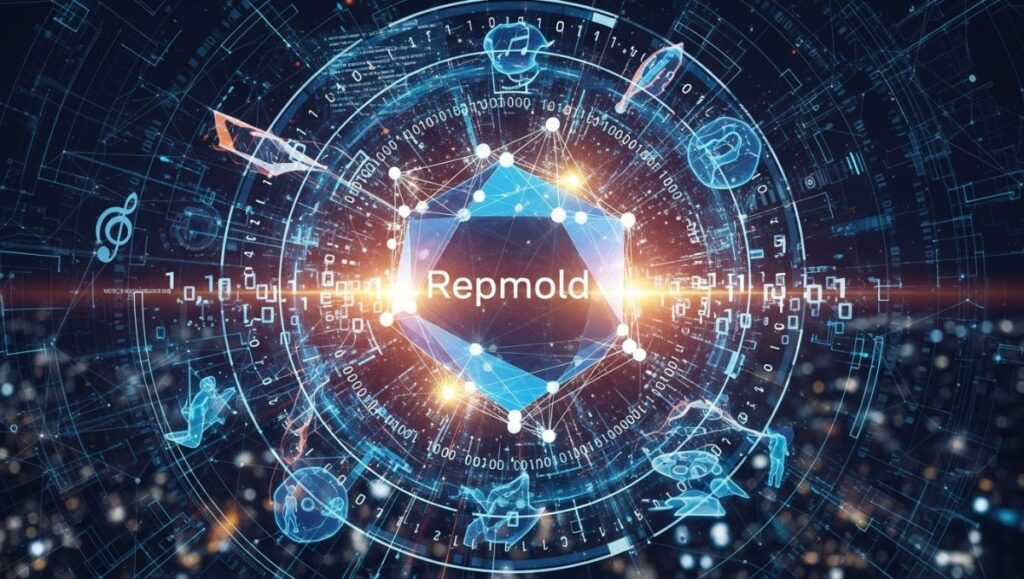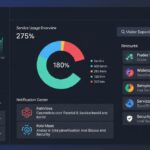In an era defined by digital transformation, concepts that bridge the physical and virtual worlds have taken center stage. Among them, Repmold stands out as a symbolic representation of replication, molding, and reinvention within the digital realm.
At its core, Repmold can be understood as a fusion of replication and molding — the process of digitally recreating, adapting, and reshaping data, ideas, or experiences into new forms. Whether in design, technology, or digital culture, the concept of Repmold represents how innovation thrives through adaptation.
As society continues to digitize everything from art to identity, Repmold offers a framework for understanding how humans use technology to reproduce, modify, and redefine their world.
Defining Repmold: A Concept Born in the Digital Age
The term Repmold blends two foundational ideas:
-
Replicate — to copy, reproduce, or reimagine something existing.
-
Mold — to shape, structure, or adapt that replication into a new form.
Together, they describe a digital philosophy where technology enables creation through imitation and transformation.
Repmold is not limited to one discipline. It can describe the act of digitally reconstructing 3D models, generating new AI-based art, or reformatting content for new audiences. It also reflects a broader cultural mindset — one that values iteration, remixing, and evolution over originality in its purest form.
In essence, Repmold represents the creative cycle of the digital world: the continuous molding of replicated data into new expressions of value and meaning.
The Origins of the Concept
While the term Repmold is modern, its roots lie in the long history of human creativity and technology. The desire to replicate and adapt has been part of human innovation for centuries — from casting sculptures in ancient times to printing books in the 15th century.
However, the digital revolution of the late 20th and early 21st centuries accelerated this concept exponentially. With computers, 3D printing, and artificial intelligence, replication and molding moved from the physical world into the virtual one.
Repmold, therefore, can be viewed as a metaphor for the digital renaissance — a process where ideas, models, and experiences can be infinitely copied, reshaped, and shared across the global network.
Repmold in Digital Design and Engineering
In fields such as digital manufacturing, 3D modeling, and computer-aided design (CAD), the concept of Repmold takes on a tangible meaning. Engineers and designers use digital tools to replicate real-world objects, analyze their form, and mold them into improved or customized versions.
This process has become central to modern product development. For instance:
-
3D scanning allows existing objects to be replicated with precision.
-
CAD software enables those replicas to be altered, optimized, or redesigned.
-
3D printing brings the digital mold back into physical reality.
Through these steps, Repmold represents a cycle of innovation — transforming physical ideas into digital forms, and digital prototypes into real-world products.
Repmold and Artificial Intelligence
In the context of AI and machine learning, Repmold becomes even more dynamic. Algorithms now replicate human behavior, language, and creativity — molding these patterns into new digital outputs.
For example:
-
Generative AI tools “repmold” text, images, or sounds from massive data sets, creating content that blends imitation with originality.
-
Neural networks learn from existing data, replicating cognitive patterns to solve new problems.
-
Digital twins in engineering use replication and molding to simulate real-world systems in a virtual environment.
These technologies demonstrate how Repmold is not just a process but a philosophy of innovation: learning from what exists to generate something unprecedented.
The Cultural Dimension: Repmold as Digital Identity
Beyond technology, Repmold also reflects how people reshape identity and creativity in digital spaces. On social media, in gaming, and through virtual avatars, individuals replicate aspects of themselves — their thoughts, aesthetics, and personalities — and mold them into curated digital personas.
This cultural manifestation of Repmold raises fascinating questions:
-
How do we define authenticity in a world built on digital replication?
-
When does imitation become creation?
-
Can digital identity ever be considered “original”?
In essence, Repmold symbolizes the human tendency to reinvent self-expression through technology. Every post, avatar, or digital artwork is a small act of replication and molding — an ongoing process of identity-making in the age of connectivity.
Repmold and the Art of Remixing
The concept of Repmold is also deeply connected to digital remix culture — where creativity thrives on borrowing, adapting, and reinterpreting existing works. From music sampling to meme creation, remixing has become one of the defining forms of modern artistic expression.
Artists and content creators often repmold inspiration from different sources — merging genres, references, and technologies to create something that feels both familiar and new.
This reimagining challenges traditional notions of authorship. Rather than focusing on originality as a solitary act, Repmold celebrates collaborative evolution — creativity as a shared, iterative journey.
In many ways, Repmold is the heartbeat of modern art and media — where the boundaries between inspiration and innovation blur.
The Ethical Perspective: Replication vs. Ownership
With the growth of digital replication comes a new ethical dimension. Repmold raises important questions about intellectual property, authorship, and ownership.
When digital content can be copied, molded, and redistributed endlessly, how do we protect the rights of creators while encouraging creative freedom?
The challenge lies in balancing innovation with integrity. Rep mold encourages adaptation and reinterpretation, but it must also respect the origin of ideas. Technologies like blockchain and digital watermarking are emerging solutions — offering transparency and traceability to ensure fair recognition in an ecosystem built on replication.
Repmold in the Business and Marketing Landscape
In digital marketing and branding, Repmold represents the adaptive power of strategy. Successful brands continuously replicate what works — tone, visuals, or messages — and mold them to fit changing trends, audiences, and platforms.
For example, a viral campaign might be “repmolded” into different cultural contexts or languages, keeping the essence intact while adapting its delivery.
Similarly, data-driven marketing uses customer insights to replicate behavioral patterns and mold personalized experiences. This process mirrors Repmold’s principle: copy, adapt, and evolve to maintain relevance in an ever-shifting digital ecosystem.
The Psychology of Repmold: Creation Through Iteration
On a psychological level, Repmold resonates with how humans naturally learn and innovate. Every new idea is built upon existing knowledge — a mental form of replication and molding.
In creativity studies, this iterative process is considered essential. Artists, writers, and inventors all “repmold” experiences, emotions, and memories into new expressions. Digital tools simply amplify this innate human ability.
Thus, Repmold can also be seen as a philosophy of growth: progress through reinterpretation, evolution through reflection. It is not the rejection of imitation, but its transformation into something meaningful.
Repmold and the Future of Digital Creation
Looking ahead, Repmold may become a defining principle of how humanity interacts with technology. As digital and physical realities continue to merge — through AI art, metaverse environments, and 3D-printed innovation — replication and molding will become the foundation of creative evolution.
We can expect future technologies to enhance this cycle:
-
AI-powered design systems that mold ideas instantly from conceptual sketches.
-
Digital ecosystems that allow global collaboration through shared creative molds.
-
Personalized virtual environments where identity and creativity are endlessly adaptable.
In this future, Repmold isn’t just a concept — it’s a digital philosophy of existence. It embodies the idea that all progress comes from what has been before, reshaped with imagination and purpose.
Conclusion
Repmold captures the essence of the digital age — a time where information, creativity, and identity are constantly replicated and redefined. It reminds us that innovation doesn’t emerge from isolation but from interaction — from the willingness to mold what exists into something better.
In art, technology, or self-expression, Rep mold represents a universal truth: creation is evolution. Every new idea is a reflection, every reflection a reinvention.
As we continue to navigate the digital landscape, embracing the Rep mold mindset means understanding that creativity is infinite — not because we invent from nothing, but because we continuously reshape the world around us.






